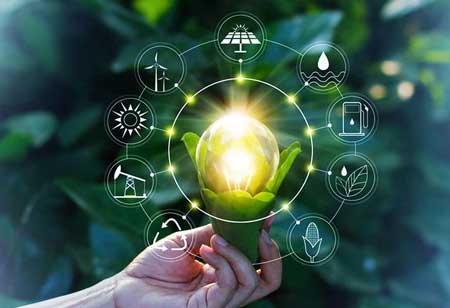Thank you for Subscribing to Energy Business Review Weekly Brief
Requirement of Non-renewable Energy Mobilities for Energy Transition in Indonesia
To show its commitment to reaching net zero emissions (NZE) by 2060, the Indonesian government has developed a plan to address numerous risks and issues that can be related to future climate change.

By
Energy Business Review | Friday, October 28, 2022
Stay ahead of the industry with exclusive feature stories on the top companies, expert insights and the latest news delivered straight to your inbox. Subscribe today.
The government has created a roadmap to address various risks and problems associated with future climate change to demonstrate its commitment to achieving net zero emissions (NZE) by 2060.
FREMONT, CA: To show its commitment to reaching net zero emissions (NZE) by 2060, the Indonesian government has developed a plan to address numerous risks and issues that can be related to future climate change. To achieve the zero-emission goal, the government is putting into action five key principles: increasing the use of new renewable energy (NRE), lowering the consumption of fossil fuels, encouraging the use of electric vehicles in the transportation sector, increasing the use of electricity in homes and businesses, and utilising carbon capture and storage (CCS).
The promise to attain net zero emissions is now insufficient because of the discrepancy between the 2025 plan and the existing position. In the 2025 plan published by the Ministry of Energy and Mineral Resources (Kementerian Energi dan Sumber Daya Mineral/ESDM), the new and renewable energy percentage was estimated at 23 per cent, while the actual utilisation rate was only at 12 per cent. Therefore, to be able to entirely give up fossil fuels or non-renewable energy sources, rigorous and thorough preparation is necessary. The existing rules and regulations governing new and renewable energy, or RUU EBT, which have not been able to develop a robust, complete legal basis and assurance, can be one of the causes.
The national energy policy is intended to act as a roadmap for national energy management to achieve energy independence and security as well as support sustainable national development. The 2025 road map is contained in the National Energy Policy (Kebijakan Energi Nasional/KEN), which was developed by the National Energy Council/Dewan Energi Nasional/DEN and authorised by the President as Government Regulation (Peraturan Pemerintah/PP) Number 79 of 2014 concerning National Energy Policy. The three points in the PP are the targets for NRE composition of 23 per cent in 2025 and 31 per cent in 2050, as well as the targets for annual electricity consumption per person of 2,500 kWh in 2025 and 7,000 kWh in 2050.
Only 8.8 gigawatts of Indonesia's 442 gigawatts of potential renewable energy were used in 2018. Satya Widya Yudha, a National Energy Council (DEN) member, stated that fossil energy in the form of natural gas and oil is still required for the optimisation of the NRE mix as a transitional fuel and as a supporting fuel for NRE plants. The technology sought in the transition phase is carbon capture and storage (CCS) technology, which can lower greenhouse gas emissions from operations requiring fossil fuels. This shows that geothermal, hydro, and wind technologies have advanced to the point that fossil energy will still play a part in the switch to NRE.
The use of NRE is not optimal because of intermittent or discontinuous energy integration. Solar power plant (PLTS) electricity also decreases or lowers as the amount of sunlight does. Similar to this, the issue of developing NRE is unanswered by the extensive use of geothermal or geothermal energy when the erratic water discharge hinders the water turbine from maximising the use of hydraulic power. Indonesia has a lot of geothermal potentials which, if used effectively, might allow it to produce electricity all day long because of its numerous volcanoes.
The drop in the cost of EBT power production and the dearth of fossil fuels that can be used at high rates will undoubtedly result in commercial opportunities on a local and international level. The electrical mix that includes NRE as the main source of energy supply needs to be supported, notably in the electricity industry, to attain a future with zero emissions. To shut down 118 coal-fired power plants, Indonesia is expected to require up to 37 billion US dollars, or around Rp 568 trillion. In actuality, 250,000 people are employed in the coal business, which still produces 60 per cent of Indonesia's power.
However, Indonesia's energy transition to NRE is generally extremely complex given that some regions still rely on local revenue from the oil and gas industry and state assets in the steam power plant (PLTU) market are quite significant. In comparison to Singapore, Malaysia, Thailand, and Singapore, Indonesian personnel are among the least qualified in Southeast Asia for the NRE sector. However, the energy transition still necessitates a continuous process and takes a variety of elements into account.
Furthermore, the announcement of the postponement of the carbon tax, enacted in 2021 in article 13 of Law No. 7/2021, which stipulates that the carbon tax takes effect on April 1, 2022, may be violated by this postponement. It demonstrates the government's lack of commitment to the energy transition. According to theory, the distribution of the proceeds from the coal carbon tax can support the advancement of NRE technology in Indonesia, allowing fossil fuel mobility to positively impact Indonesia's preparation for NRE. Although fossil fuel use and investment are still essential for Indonesia's energy transition, there hasn't been any significant work done to determine how to do so far.






